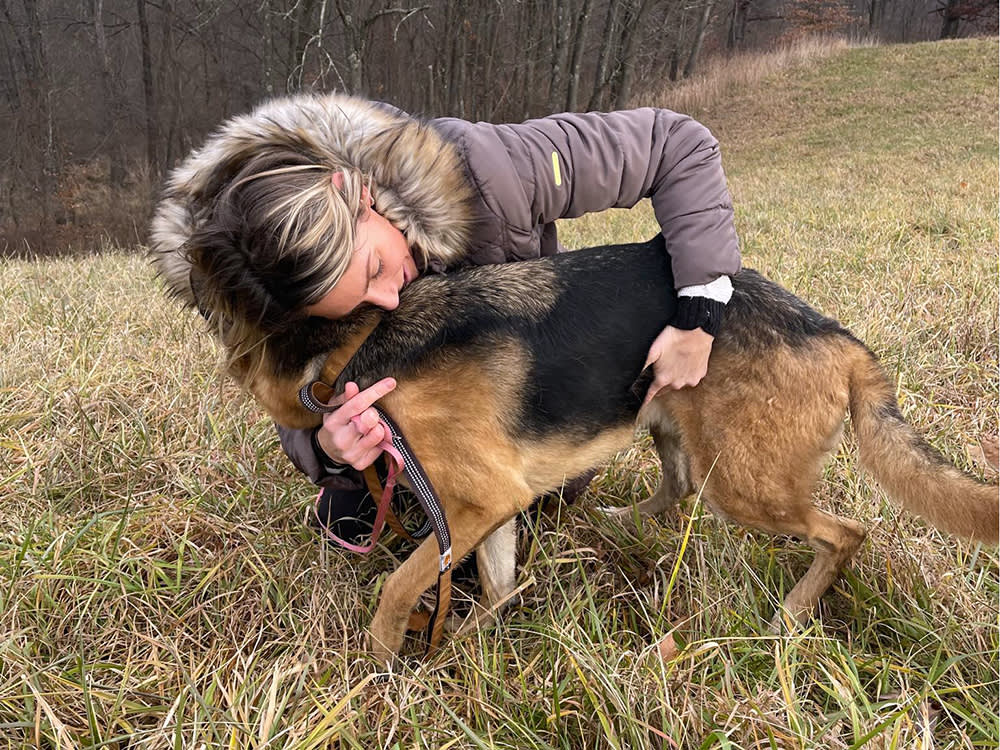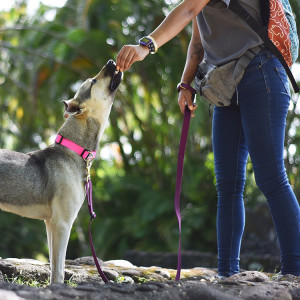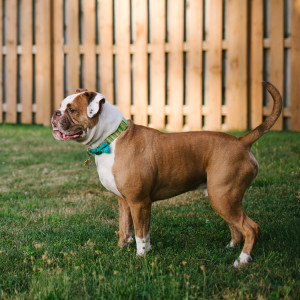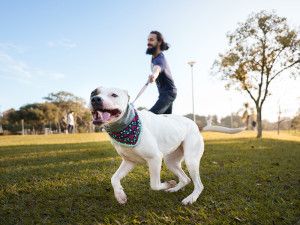9 Tips To Find a Lost Dog—Fast
Buddha Dog Rescue and Recovery founder Nicole Asher’s pro tips for getting your missing pup home safe.

share article

Your pet wants you to read our newsletter. (Then give them a treat.)
Losing your dog is every pet parent’s worst nightmare. If you’ve found yourself in this nerve-racking scenario, don’t panic. Nicole Asher of Buddha Dog Rescue and Recoveryopens in a new tab — whose miraculous success stories include finding a dog who had traveled 80 miles from his family and another who had been adopted by a pack of coyotes! — compiled a step-by-step list of what you should do to give you the best shot at bringing your pup home safe.
Below, Buddha Dog’s quick-action plan — then read on to see what to do when you get calls with sightings.
9 steps to take ASAP when your dog goes missing
1. Jump into action as soon as possible
It’s normal to feel frantic, but you’ll have to stay calm and focused for your pup. The sooner you act, the better. Avoid jumping to conclusions that would slow you down: Don’t assume your dog will wander home, and don’t assume they were stolen.
2. Search your home thoroughly
Check your bushes, garage, under your car, and other den-like areas on your property. It’s possible your dog is frightened and hiding. Carry a leash during your search, and don’t forget the treatsopens in a new tab. If your dog bolted out of your electric fenceopens in a new tab, turn off your fence so your dog will be able to safely get back into their yard.
3. Talk to your neighbors
Ask your neighbors to check their yards, under their porches, and in their garages. And ask them to check their home video surveillance, such as Ring cameras.
4. But, instruct them not to go out searching
While friends, family members, and well-meaning people will want to physically search for your dog, it is actually the wrong thing to do. This will only exacerbate how afraid your dog is as they’ll feel threatened or hunted, and will drive your lost dog further and further away.
It is best to get flyers up in the area as quickly as possible so the calls with sightings start coming in. If someone sees your dog, they should sit or lay down (avoiding eye contact) and gently toss treats to the side to lure your dog in.
5. Create and print a flier
Use large type and print 250 copies (to start) using color ink. Include a clear, full-body photo of your dog. Write “Do not chase” and your phone number in bold print. Post within a two-to-three mile radius of where your dog went missing. In neighborhoods that have no telephone poles, you can go door-to-door with flyers or place them in newspaper boxes. (Note: It is a federal offense to put them inside mailboxes.) When placing flyers on telephone poles, make sure they are facing the direction people are driving, stapled in all four corners, and in plastic sheet protectors to protect them from rain. And turn your car into a billboard — tape your lost dog poster on the sides and back of your car windows.
Other businesses and public places to post fliers include pet food stores, groomers, dog parks, doggy daycares, subway and bus stations, churches, schools, post offices, convenience stores, department store parking lots (under windshield wipers), gas stations, and public parks — also hand fliers to parks department staff!
6. Alert the authorities
Call animal control officers, police departments, veterinarians, and animal shelters within a 20-mile radius so they can be on the lookout. Also, go to animal control, local shelters, and vet clinics to hand them fliers. Remember to include microchip identification opens in a new tabnumbers if applicable, and ask that they scan and verify ownership of any pet matching the description or photo you provided.
Call local highway departments in nearby towns. If, worst case scenario, your pet is hit by a car, the highway maintenance department would be called to pick up the dog. Contact them directly to see if they received any calls.
7. Set up some stinky food in a bowl, near a favorite blanket
Think: hot dogs.
8. Man your phone
Your phone should be on 24/7 to answer calls from possible sightings. If your dog has an ID tag with your phone number on it or a microchip, you may very well get a call. And keep a notebook on hand so you can record all sightings of your dog with date, time, exact location, and the direction they were headed.
9. Post on Facebook, NextDoor, Ring Community and other online sites
Be sure to include a photo! And sign up for Lost My Doggieopens in a new tab, an emergency phone alert for lost pets (for a fee).
What to do when you receive call of sightings
Record all sightings in a log book.
Record the name of the caller and their phone number.
Ask simple questions, such as:
Where did you see my dog (exact location or landmark)?
When did you see my dog?
Can you describe my dog? If they were wearing a collar, what color was it?
What were they doing (running down road, playing with other dogs, laying down)?
Was my dog in the road, in a yard, or running down the street (if the latter, which direction were they coming from and where were they headed)?
After you finish with the call, make sure to post it on a map. You can use a paper map or satellite maps. This will help you figure out the direction of travel.
What to do when you see your dog (or show up at a sighting)
This may come as a surprise, but don’t expect your dog to recognize you — especially if they’re a newly adopted rescue dog. When dogs are lost, they go into survival modeopens in a new tab and often don’t recognize their own pet parents. The last thing you want to do is run towards your dog to scoop them up.
It goes against every natural instinct, but curb your enthusiasm and follow this tried-and-true tip: Sit or lay down (avoiding eye contact) and gently toss treats toward your pup to lure them towards you. If they take the treats, they may not realize who you are until they’re close enough to smell you — so don’t make a move until you’re 100 percent sure you can attach a leash without them bolting off again.
Read more about survival mode hereopens in a new tab. If your dog is newly adopted and doesn’t yet trust you, hire a professional trapper in your area.
Nicole Asher
Nicole Asher is a writer.
Related articles
![dog leaning on laptop while man types]() opens in a new tab
opens in a new tabFor the Record, How to File Your Dog’s Papers
Don’t trust your dog’s important info to your foggy memory.
![Golden retriever running around a local park during sunset]() opens in a new tab
opens in a new tabThe Macro Benefits of Microchipping Your Dog
Sure, microchips can feel a little 1984. But if your pup has a chip, they’re four times more likely to make it home if they get lost.
![A woman feeding her dog a treat while on a hike.]() opens in a new tab
opens in a new tabWhy Your Dog Needs a Martingale Collar
For starters, it prevents escape, works as a training tool, and is recommended by rescue workers.
![Bulldog standing in the lawn in front of a plain wood Pickett fence]() opens in a new tab
opens in a new tab“How Do I Get My Dog to Stop Jumping at the Fence?”
Dog trainer Robert Haussmann’s tips for calming down a dog who’s protective of their turf.
![Man in park struggling to hold his Pitbull dog who is pulling on a leash]() opens in a new tab
opens in a new tab“How Do I Get My Dog to Stop Pulling on the Leash?”
Dog trainer Robert Haussmann’s tips for turning a stressful walk into a chill stroll.





